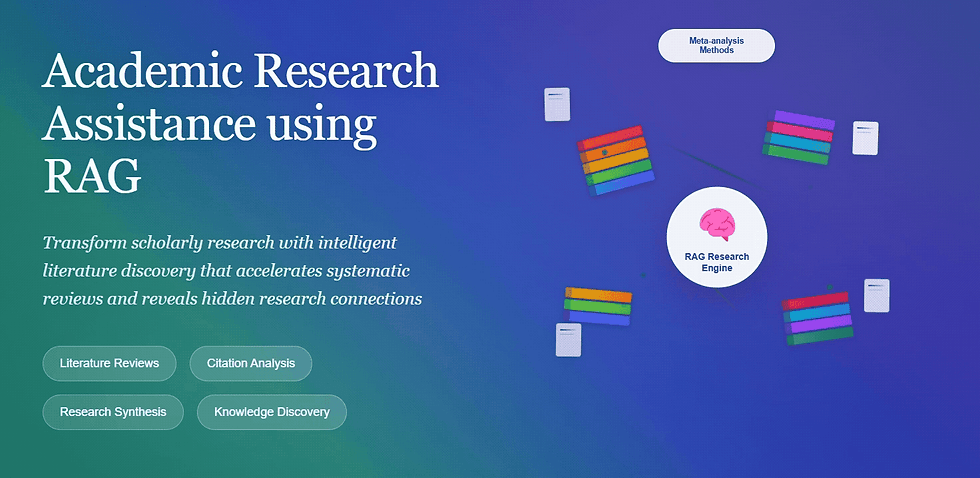Extracting Actionable Insights from FDA Text Data: A Data Science Approach for Healthcare Decision-Making
- Codersarts

- Aug 9
- 3 min read
In today’s data-driven healthcare environment, regulatory bodies like the U.S. Food and Drug Administration (FDA) maintain massive databases of drug and medical device reports. These records contain valuable, often underutilized, information about adverse events, emerging safety concerns, and treatment outcomes.
This sample project demonstrates how modern Natural Language Processing (NLP) and machine learning techniques can be applied to extract, analyze, and visualize critical insights from FDA text data. The aim is to create actionable knowledge that supports healthcare providers, pharmaceutical companies, and regulatory agencies in making informed decisions to improve public health.

Project Objective
To analyze publicly available FDA datasets—such as the FAERS (FDA Adverse Event Reporting System) and MAUDE (Manufacturer and User Facility Device Experience)—and identify:
Adverse events and key symptoms
Trends in reported issues
Potential safety signals for drugs and medical devices
Emerging patterns that may require early intervention
Proposed Methodology
The project workflow integrates multiple advanced analytics steps:
1. Data Acquisition
Collect structured and unstructured text data from openFDA and other FDA repositories.
Focus on adverse event reporting systems for drugs and medical devices.
2. Data Cleaning & Preprocessing
Remove duplicates, null values, and irrelevant text.
Normalize terminology using medical ontologies like UMLS.
Tokenization, lemmatization, and stopword removal for text fields.
3. Exploratory Data Analysis (EDA)
Visualize most common drug-event pairs.
Identify time-based patterns in adverse event frequency.
4. Advanced Text Analytics
Topic Modeling (e.g., LDA) to group related adverse event descriptions.
Clustering to segment reports with similar patterns.
Sentiment Analysis for patient-reported experiences.
Anomaly Detection to flag unusual spikes in certain events.
5. Trend Identification & Insights
Use statistical analysis to detect long-term safety concerns.
Cross-reference with other public health datasets.
Potential Extensions
Beyond analytics, the project can evolve into:
Chatbot or RAG-based Medical Assistant
A Retrieval-Augmented Generation model capable of answering questions about FDA-reported events in natural language.
Useful for clinicians and researchers for quick data lookups.
Early Warning Dashboards
Automated monitoring of high-risk drugs/devices for regulatory alerts.
Tools & Skills Required
Programming: Python or R
Libraries & Frameworks: Pandas, Scikit-learn, NLTK, SpaCy, Gensim, Hugging Face Transformers
Data Science Skills: NLP, unsupervised ML, anomaly detection, clustering
Other Skills: Web scraping, data wrangling, medical terminology understanding
📅 Suggested Timeline (24 Weeks)
Weeks | Activities |
1 | Finalize project scope |
2-5 | Data sourcing & background research |
6-7 | Data cleaning & EDA |
8-10 | Core analysis (topic modeling, anomaly detection, etc.) |
11-12 | Results evaluation & initial prototype (chatbot/RAG) |
13-18 | Algorithm refinement & deeper trend analysis |
19-24 | Final analysis, reporting & presentation |
This is a tentative timeline. If the project needs to be completed sooner, adding more team members and groups will expedite its completion.
Expected Impact
This project framework showcases how data science can:
Improve drug and device safety monitoring
Enable proactive healthcare interventions
Reduce regulatory response time
Facilitate better patient outcomes
By turning raw FDA data into structured, actionable insights, such initiatives pave the way for safer pharmaceuticals and more effective medical devices.
How Codersarts Can Help You
At Codersarts, we deliver end-to-end AI, Data Science, and NLP solutions for healthcare, pharmaceuticals, and regulatory projects — and we also guide innovators from idea to full product launch.
Specialized Services for FDA & Healthcare Data Projects
FDA Data Integration & Automation – Build pipelines to collect, update, and process datasets from openFDA, FAERS, MAUDE, and other regulatory sources.
Advanced NLP & Text Mining – Extract adverse events, symptoms, correlations, and sentiment from large-scale medical text datasets.
Topic Modeling & Trend Analysis – Identify emerging safety concerns and categorize similar adverse event reports.
Anomaly Detection Systems – Flag unusual event spikes for proactive intervention.
RAG-Based Medical Assistants – Conversational AI for quick, natural language access to safety and regulatory data.
Interactive Regulatory Dashboards – Visualize patterns, compliance metrics, and historical trends for decision-makers.
Data Cleaning & Terminology Normalization – Ensure medical text is standardized and analysis-ready.
Extended Healthcare & Pharma AI Solutions
Clinical Trial Data Analysis – Automate insights extraction from trial reports.
Post-Market Safety Surveillance – Continuous monitoring systems for drugs and medical devices.
EHR Data Processing – NLP-driven analysis of patient histories, diagnoses, and outcomes.
Multi-Modal Analysis – Combine text and imaging data for richer insights.
Additional Codersarts Services
1:1 Expert Mentorship – Personalized guidance on AI, ML, NLP, and healthcare data analytics for students, researchers, and professionals.
MVP (Minimum Viable Product) Development – Rapidly turn healthcare AI ideas into functional prototypes.
SaaS Product Development – Build scalable, secure cloud-based solutions for healthcare data management and analytics.
Custom AI & Automation Solutions – Tailored systems for unique business or research needs.
Academic & Research Support – Assistance with project design, coding, documentation, and publications.
From academic assignments to enterprise-grade SaaS platforms, Codersarts offers the expertise, tools, and strategic support you need to succeed.
Let’s transform your data into decisions.
Contact Codersarts today to discuss your project requirements and start building your solution.



Comments